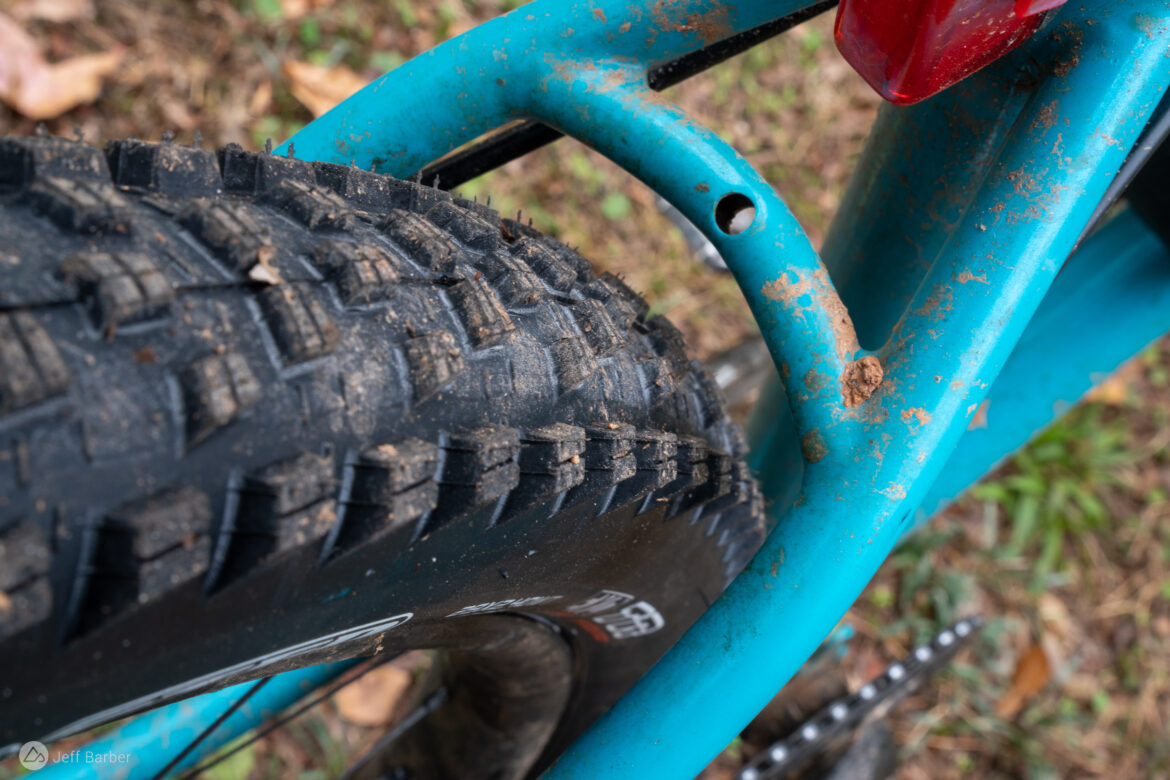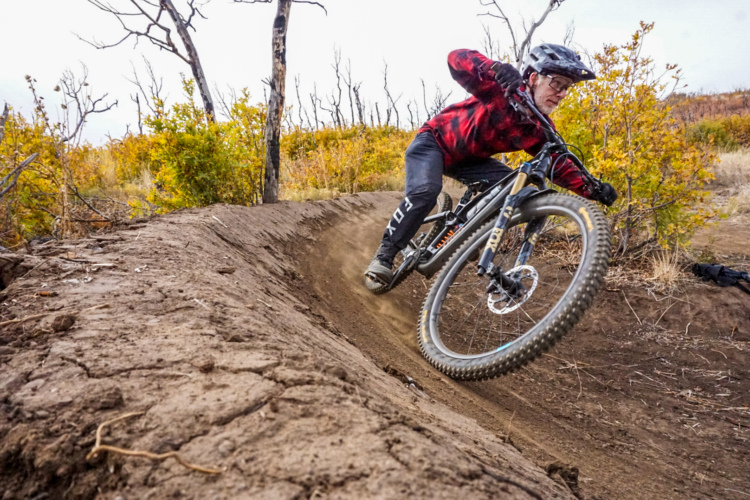
The Maxxis Forekaster was originally designed as a wet-weather XC mountain bike tire optimized to excel in loose conditions. Late last year Maxxis updated and recast the Forekaster as a “downcountry” tire designed to provide plenty of cornering and braking traction while still rolling fast through a variety of trail conditions.
I’ve been testing the new Maxxis Forekaster tire this fall and winter, and I’ve found it found it corners predictably without feeling sluggish or heavy when it’s time to pedal. Looking at the tread and comparing to the previous generation, it’s clear that Maxxis updated a lot more than just the Forekaster’s marketing copy.

Maxxis Forekaster tread pattern changes
Overall the new Maxxis Forekaster features more tightly-packed knobs, particularly down the center line. The single center knob that looks like the Transformers logo slides down half a block length to sit in between the transition knobs and it appears the double center block moves closer to the Transformer knob as well. It also looks like the side knobs are a bit closer together, though it’s hard to tell for sure.
The single center knob trades double siping for a single cut across the middle while the transition knobs see the 45° siping go completely horizontal. Overall the center and transition knobs generally keep the same shape as before. Looking closely, new horizontal micro knobs have appeared in between the main knobs. (Update: Maxxis says the horizontal blips are designed to help with mud clearing.)
Onto the cornering aka side knobs, Maxxis changed things up significantly. Gone is the alternating pattern of two distinct knob shapes. In its place, a uniform, inline row of squared-off knobs each with a single vertical sipe.
The Forekaster is a directional tire and is designed to run front and/or rear.
Looking at these changes one could speculate about how the tire will perform but there’s no substitute for good old fashioned trail testing. It’s a tough job but someone has to do it.
Maxxis Forekaster specs and installation notes
The new Maxxis Forekaster is available in just one size and spec at the moment: 29×2.40 with EXO casing and dual compound. Maxxis says a 29×2.60 version will be available later this year, and from the sounds of it a 3C Maxxterra version in the 2.4″ and/or 2.6″ widths. The previous generation Forekaster was available in at least three different widths and two diameters in case that’s any guide.
Reviewer profile height: 190cm (6’3″) weight: 75kg (165lb) testing zone: Southeast, USA
The EXO/TR casing is designed for XC and light duty trail riding and naturally the Forekasters are tubeless-ready. The tires I’m testing weigh 960g each, and some have mentioned the new Forekasters are heavier than the previous version. Maxxis classifies this as a “Wide Trail” tire meaning it’s optimized for 30mm rims.

I was able to mount the Maxxis Forekasters tubelessly front and rear with a basic floor pump. When the bead popped into place it let out one of the loudest snaps in recent memory. As a result I’m seriously considering adding earplugs to my toolkit.
On my 32mm-wide rims at 15psi the tires are 58.7mm (2.31in) wide. The tire has a nice roundish profile as opposed to other tires that appear more squarish.


On the trail with the Maxxis Forekaster tires
Maxxis has some pretty weird tire names, and one thing that’s clear is that they’re fans of using the letter K in place of C, perhaps in a dig against one of their main competitors. Whatever the reason, Forekaster seems like an appropriate name given how predictable the latest version transitions into the corners. It took me very little time to get comfortable with leaning the front tire into turns where the Forekaster provides excellent cornering support.
In fact, the Forekaster’s cornering performance brings to mind another favorite Maxxis tire, the Minion DHF. Clearly Maxxis is looking to bring some of that Minion cornering magic to trail riders without the associated weight and drag of a full-on gravity tire. Given how effortlessly the new Forekaster pedals I would say they’ve found a good balance.
As an all-conditions tire, the Forekaster seems like a good choice. It’s fast rolling on dry hardpack and pavement yet still delivers decent climbing traction in loose to wet conditions. The supple EXO/TR casing allows the tire to conform well over roots and rocks without feeling too floppy in the corners.
Quantifying the braking performance is tricky, but I’d say these are a solid six or seven out of ten. The medium height, ramped center knobs do a pretty good job digging into loose soil and the rubber compound offers enough stickiness when braking on steep slabs at moderate speed. Given the simple, two-compound construction, my center and side knobs have worn pretty evenly.
Despite only having the 60tpi EXO casing I haven’t experienced a single flat, pinch or otherwise, while testing the Forekaster front and rear at pressures between 15-20psi. Keep in mind, however, that this is a “downcountry” tire designed for XC and short-travel trail riding. I found that when ridden with those intentions, the Forekaster proves to be a sturdy tire.
Pros and cons of the Maxxis Forekaster mountain bike tire
Pros
- Easy roller
- Predictable transition knobs
- Good choice for general conditions
Cons
- Heavier and/or more aggressive trail riders will want a burlier casing option.
Bottom line
The updated Maxxis Forekaster is a top choice for light-duty trail riding in most conditions thanks to efficient rolling center knobs, predictable transitions, and sturdy cornering knobs.
- Price: $83.
- Buy from JensonUSA and other online retailers











7 Comments
Jan 7, 2023
Jan 6, 2023
Jan 6, 2023
Sep 30, 2023
Sep 30, 2023
Would like to try this new forekaster in same way, but think they would be slower rolling..
Oct 2, 2023
Jan 14, 2023